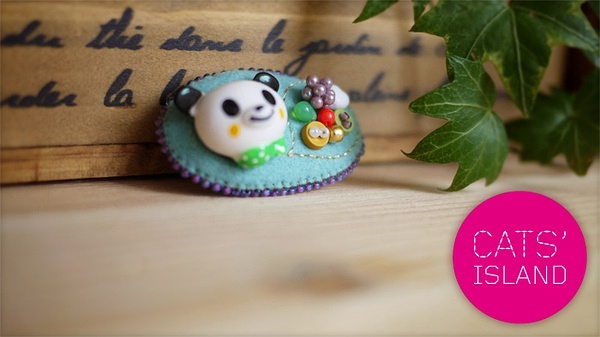Panda Cats:Unveiling the Lesser-Known Facts in English
- 百科大全
- 2025-09-20
- 58
Panda cats, also known as panda-like cats or simply pandas, are not a separate species but rather a term used to describe cats with unique markings that resemble the distinctive black and white pattern of the giant panda. These feline creatures are fascinating and have captured the hearts of many due to their adorable appearance. In this article, we will delve into some intriguing cold knowledge about panda cats in English.
-
Origin of the Term: The term "panda cat" is not scientifically recognized, but it has been popularized by cat enthusiasts and the internet. The name is derived from the visual similarity between the markings of these cats and the giant panda (Ailuropoda melanoleuca), which is native to China.
-
Genetics and Markings: The black and white markings of panda cats are not the result of a specific breed but rather a combination of genetics and chance. These markings can appear in various breeds, including the American Shorthair, British Shorthair, and even the Siamese. The patterns can be random or follow certain genetic patterns.
-
Adoption and Popularity: Panda cats have gained significant popularity on social media platforms, where their photos and videos often go viral. This has led to an increase in demand for cats with these markings, which can sometimes lead to ethical concerns regarding breeding practices.
-
Health Considerations: While the markings themselves do not indicate any health issues, it's important to note that certain genetic traits associated with specific breeds can sometimes come with health risks. Potential owners should research the health concerns of the breed they are interested in and ensure they are prepared to provide proper care.
-
Behavioral Traits: Panda cats, like all cats, have a range of behavioral traits. However, there is no specific behavioral pattern that is unique to panda cats. Their behavior will largely depend on their breed, individual personality, and upbringing.

-
Cultural Significance: In Chinese culture, the giant panda is a symbol of peace and good fortune. While panda cats do not carry the same cultural significance, they are often associated with the same positive attributes due to their similar appearance.

-
Conservation Efforts: The popularity of panda cats has led to some initiatives that aim to raise awareness about the conservation of the real giant panda. Some organizations use the appeal of panda cats to educate the public about the importance of protecting the natural habitats of pandas and other endangered species.

-
Myth vs. Reality: There is a common myth that panda cats are a result of crossbreeding between cats and pandas. This is not true. Panda cats are simply domestic cats with unique markings, and they are not a hybrid species.
-
Naming Conventions: Panda cats are often given names that reflect their appearance, such as "Panda" or "Bamboo." However, naming conventions can vary widely and are often a personal choice by the owner.
-
Adoption and Care: When adopting a panda cat, it's crucial to consider the specific needs of the breed, if known, as well as the individual cat's personality and health. Providing a balanced diet, regular veterinary check-ups, and a safe and stimulating environment are essential for their well-being.
In conclusion, panda cats are a fascinating subject within the realm of feline enthusiasts. Their unique markings make them stand out, and their popularity has led to a variety of interesting cultural and social phenomena. As with any pet, it's important to approach the adoption and care of a panda cat with knowledge, responsibility, and a deep appreciation for the individual animal's needs and characteristics.




















